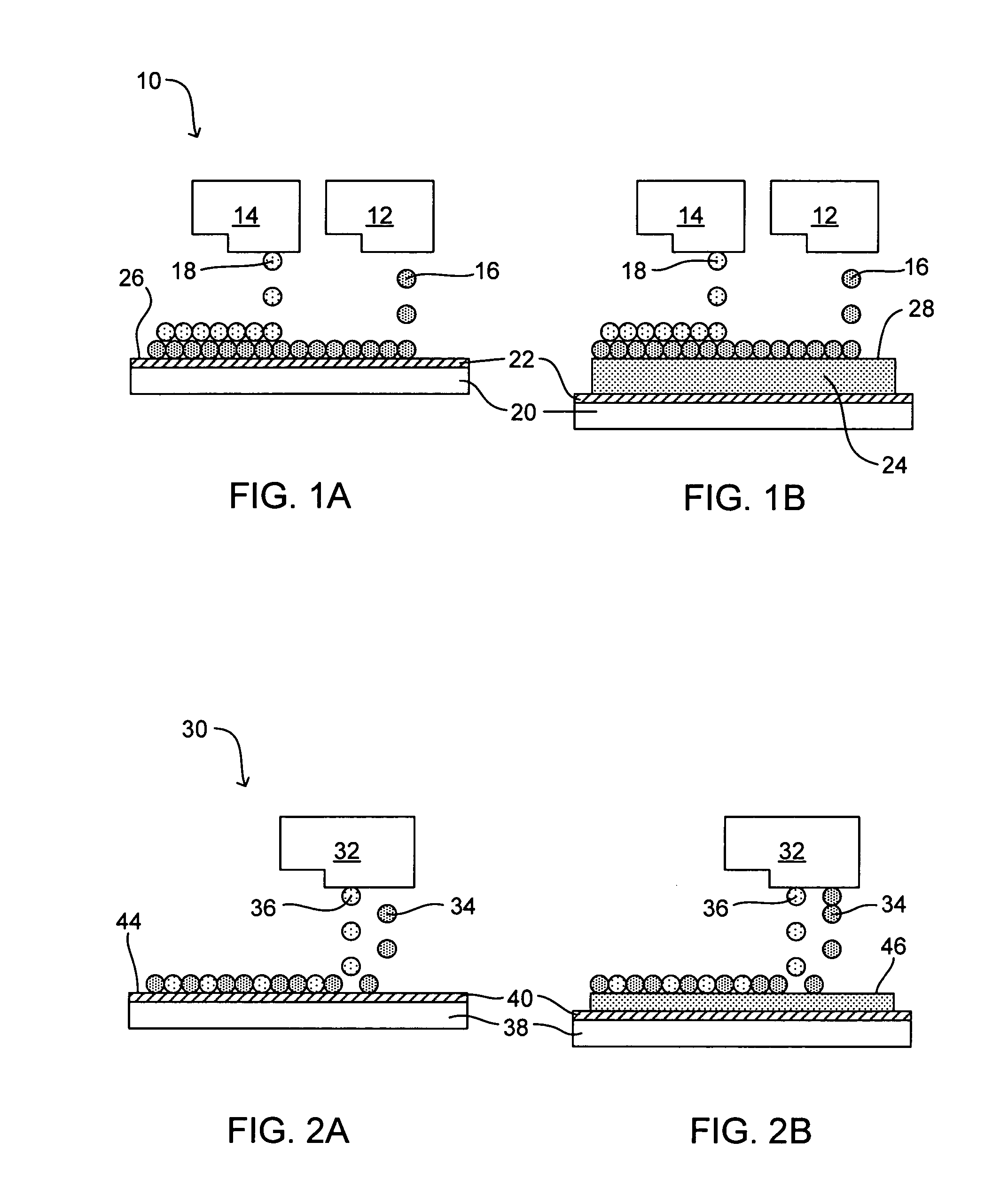Ink-jettable reactive polymer systems for free-form fabrication of solid three-dimensional objects
- Summary
- Abstract
- Description
- Claims
- Application Information
AI Technical Summary
Benefits of technology
Problems solved by technology
Method used
Image
Examples
example 1
[0055] A first ink-jettable liquid composition comprising an epoxy reactive build material resin (Stycast W19 manufactured by Emerson and Cummings) was loaded into a first piezo ink-jet pen. A second ink-jettable liquid composition comprising an amine curing agent (Catalyst 9 manufactured by Emerson and Cummings) was loaded into a second piezo ink-jet pen. Liquid vehicle was not added to the first and second ink-jettable liquid compositions. Each ink-jet pen was warmed to a temperature between 70° C. and 90° C., and subsequently, jetted onto a substrate at a 100:15 volume ratio of Stycast WI 9 to Catalyst 9, thereby forming a solidifying composition. This process was repeated such that successive layers of solidifying composition were reacted and accrued. Once cured, about 100% of the composition was believed to have solidified to form a solid three-dimensional object.
example 2
[0056] The same procedure was followed as described in Example 1, except that the printed samples were deposited on a substrate that was heated to 100° C. to reduce the curing time of the solidifying composition.
example 3
[0057] A two-part product having part number OG205 (manufactured by Epo-Tek), consisting of an epoxy resin (Part A) and an amine curing agent (Part B), were used to prepare a solid three-dimensional object in accordance with embodiments of the present invention. Both Part A and Part B were each loaded into separate piezo ink-jet pens. Each printhead of each ink-jet pen was warmed to about 90° C. After warming, Part A and Part B were printed onto a substrate at a 100:50 volume ratio of Part A to Part B, and subsequently, successive layers were printed to accrue thereon. Once cured, about 100% of the composition was believed to have solidified to form a solid three-dimensional object.
PUM
| Property | Measurement | Unit |
|---|---|---|
| Temperature | aaaaa | aaaaa |
| Viscosity | aaaaa | aaaaa |
| Composition | aaaaa | aaaaa |
Abstract
Description
Claims
Application Information
 Login to View More
Login to View More - R&D
- Intellectual Property
- Life Sciences
- Materials
- Tech Scout
- Unparalleled Data Quality
- Higher Quality Content
- 60% Fewer Hallucinations
Browse by: Latest US Patents, China's latest patents, Technical Efficacy Thesaurus, Application Domain, Technology Topic, Popular Technical Reports.
© 2025 PatSnap. All rights reserved.Legal|Privacy policy|Modern Slavery Act Transparency Statement|Sitemap|About US| Contact US: help@patsnap.com

